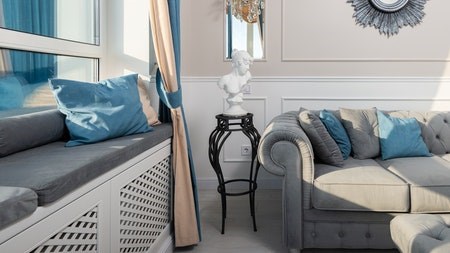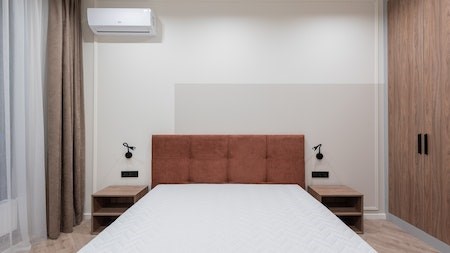Upholstery fabric for living room furniture needs to suit your lifestyle. You need to consider the level of use – if you often entertain friends, whether or not children, pets and part of the family and whether the furniture will be exposed to intense sunlight.
You also need to be sure it is in a design you love and can live with for a long time. Fashions change regularly, but you don’t want to have to reupholster your furniture too frequently.
Keep in mind that plain colours are more versatile, but patterned fabrics wear stains and damage better. If you prefer patterned fabric, be sure the print you choose suits the item it is covering. Generally, traditional patterns are best for classic pieces, whereas neutral fabrics work well on contemporary designs.
Also, keep in mind the scale of the pattern – a big, bold print will look good in a large room, and more delicate designs will suit a small living room.
Choices
There is a wide selection of durable fabrics to choose from, including traditional jacquard weaves, damask, crushed velvet and leathers that improve with age. In addition, wool, cotton or synthetic fabrics are durable and suitable for everyday living.
- Wool is hard-wearing, comfortable year-round and naturally dirt-repellent.
- Cotton blends are hard wearing.
- Leather is durable, but it can stretch and crease - and show paw scratch marks. Pigmented versions generally are more dirt-resistant but don't look as natural as semi-aniline, which is soft but has a protective finish. Aniline leather is also soft but will more easily show wear.
- Tightly woven velvet fabrics are also durable as the wear takes place on the end of the pile tuft.
- Good quality linen shouldn’t fade, but it can sometimes wrinkle.
- Silk is luxuriant but is prone to sun damage and needs careful cleaning.
Durability
How a woven fabric wears depends on the type of fibre it is made from, how tightly the thread is spun and how closely the threads are packed in the weave.
Wear is measured in rub count - the higher the number, the more durable it will be. Also, tight weaves, high thread counts and woven patterns rather than printed are more hard-wearing. Protective treatments for upholstery are available, and these are advisable for homes with young children and pets.
Fabric capabilities are noted in swatch books, along with composition and rub tests. Upholstery fabrics for domestic use must have a minimum rub count of 10 000, but most have at least 20 000.
In addition to the rub count, upholstery fabrics should be fire-resistant. Upholstered furniture for domestic use must pass the match and cigarette test if the fabric is synthetic. If the furniture is made from more than 70% natural fibre – such as wool or cotton – the outer fabric can be used with a fire-retardant lining provided it passes the cigarette test. Other fabrics can be coated with fire retardant chemicals.
Pet-friendly
If you have pets, your upholstery fabric needs to be particularly hard-wearing. Fortunately, there are many stain guard treatments for fabrics, which repel stains.
- Thick leather is easy to clean as pet hair, and light dirt can be wiped off. However, sharp claws can leave permanent damage.
- If you have cats, it’s best to avoid fabrics with an open weave, such as linen, as they can get their claws into it.
- Velvet will pick up cat fur and dog hair, so you’ll need to keep a lint roller handy.
- Wool is hard-wearing, but pet hair is difficult to remove – even with a lint roller.
- Removable, washable covers may be the answer if you have pets. They are also a good option if you want the flexibility of changing the look of your furniture.
In the final analysis, what works best for you will depend on your lifestyle and the look you want.





